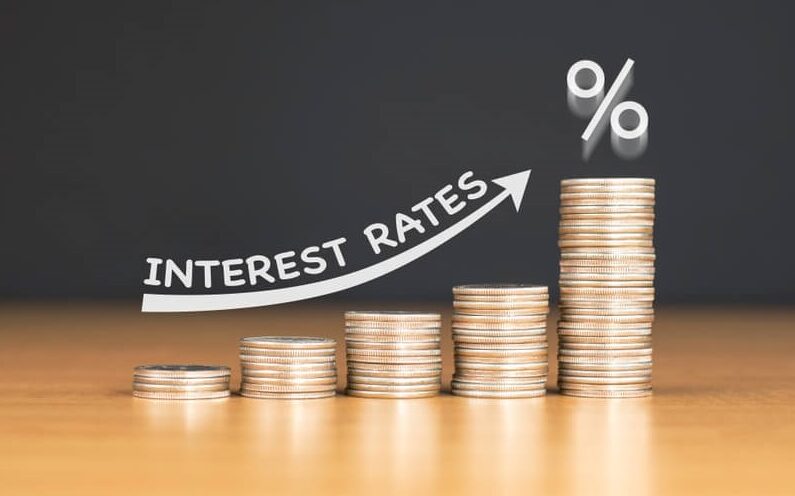About the time the most trusted man in America, Walter Cronkite, signed off from the CBS Evening News for the last time, something momentous happened in the United States credit market. Few people, apart from Bill Gross and A. Gary Shilling, understood what was going on.
Hindsight is always 20/20. And looking at a chart of U.S. interest rates several decades later it all seems so obvious. Specifically, that the rising part of the interest rate cycle peaked out in 1981.
This one thing, in essence, changed everything. Over the next 39 years interest rates fell as mega-asset bubbles were puffed up and floated across the land.
The relationship between interest rates and asset prices isn’t complicated. Tight credit generally produces lower asset prices. Loose credit generally produces higher asset prices.
When credit is cheap and plentiful, individuals and businesses increase their borrowing to buy assets they otherwise couldn’t afford. As cheap credit flows into various assets, it balloons their prices in kind.
For example, individuals may use cheap credit to take on massive jumbo loans. This allows them to bid up house prices. Businesses, flush with a seemingly endless supply of cheap credit, may borrow money and use it to buy back shares of company stock. This has the effect of inflating share prices, and the value of executive stock options.
When credit is tight, the opposite happens. Borrowing is reserved for activities that promise a high rate of return; one that exceeds the high rate of interest. This has the effect of deflating the price of financial assets.
More Pain to Come
In 1981, following a great wave of Federal Reserve manufactured inflation, credit was expensive. At the same time, stocks, bonds and real estate were cheap. For example, in 1981, the interest rate on a 30-year fixed mortgage reached the unimaginable high of 18.45%. That year, the median sales price for a U.S. house was about $70,000.
By comparison, in December 2020, the 30-year fixed mortgage rate dropped to a historical low of 2.68%. Rates remained below 3% for most of 2021. This allowed many borrowers to refinance or buy houses at extreme low rates.
Thus, the median sales price for a U.S. house peaked at $468,000 in the third quarter of 2022. Along the country’s East and West Coasts prices inflated much higher.
In 2022, as the Fed commenced hiking the federal funds rate in an attempt to contain the raging consumer price inflation of its making, the 30-year fixed rate mortgage spiked up to over 6.5%. Consequently, U.S. house prices are now deflating and likely have much further to fall to complete this boom-and-bust cycle.
Similarly, the Dow Jones Industrial Average (DJIA) was roughly 900 points in 1981. Then, on January 4, 2022, the DJIA hit its all-time closing high of 36,799 points. That comes to over a 3,988% increase. Since then, however, as interest rates have increased, the DJIA has started deflating to its recent close of 34,053. Like house prices, we believe the DJIA also has much further to fall.
Without question, the 39-year run of cheaper and cheaper credit had something to do with ballooning stock and real estate prices. Asset prices and other financialized costs, like college tuition, have been grossly distorted and deformed by nearly four decades of falling interest rates.
The gap between high asset prices and low borrowing costs have positioned the world for a great reckoning. Certainly, 2022 was a difficult year for stock and bond investors. Nonetheless, there is plenty more pain to come.
Only 37 More Years to Go
The Fed has strong influence over credit markets through its open market operations. But it is not the credit market’s ultimate master. The fact is, Fed credit market intervention plays second fiddle to the overall rise and fall of the interest rate cycle.
From a historical perspective, today’s 10-Year Treasury note yield of 3.39 is still extraordinarily low. But if you consider just the last two years, it’s extraordinarily high.
The yield on the 10-Year Treasury note bottomed out around just 0.62% in July 2020. At 3.39% today, the yield his increased dramatically. In fact, the yield on the 10-Year Treasury note has increased over 446% over the last 31 months. Quite frankly, it’s amazing there hasn’t been a major blow up of a major investment fund — yet.
The last time the interest rate cycle bottomed out was during the early-1940s. The low inflection point for the 10-Year Treasury note at that time was a yield somewhere around 2%. After that, interest rates generally rose for the next 40 years.
No one can predict the future. But looking to past interest rate cycles for guidance provides a startling realization. We may be less than three years into a 40-year period of rising interest rates. In other words, everything the world has come to know and love about financial markets since 1981 has been stood on its head.
Between 1981 and 2020, each time the economy went cold, the Fed cut interest rates to juice financial markets. In this disinflationary environment, asset prices increased while incomes stagnated. Moreover, aided by an abundance of cheaply made goods from China, increases to consumer prices over this period were moderate.
The Fed, while conflating apparent success with luck, thought it had somehow tamed the business cycle. Congress also discovered it could spend printing press money without consequences. These takeaways couldn’t be further from the truth.
Your Broker Has No Clue
Not many people are still alive who remember how drastically different the effects of the Fed’s policy adjustments are during the rising part of the interest rate cycle than during the falling part of the interest rate cycle.
During the rising part of the interest rate cycle, as demonstrated in the 1970s, after the U.S. defaulted on the Bretton Woods Agreement, Fed interest rate policy became increasingly damaging. Fed policy makers demonstrated they are politically incapable of staying out in front of rising consumer prices. Their efforts to hold the federal funds rate artificially low, to boost the economy, no longer had the desired effect.
In this scenario, monetary inflation brought about consumer price inflation. Fed policies were policies of disaster.
In July 2020, roughly 39 years after it last peaked, the credit market finally bottomed out. Yields are rising again. In truth, they may rise for the next three to four decades.
This means the price of credit will increasingly become more and more expensive well into the mid-21st century. Hence, the world of perpetually falling interest rates — the world we’ve known since the early days of the Reagan administration — is over.
This is something most politicians, consumers and investors have little comprehension of. Your broker also likely has no clue what has happened.
Many investors, having little experience beyond two decades, let alone four decades, are enamored with the vaunted salvation of a forthcoming Fed pivot. This limited focus will compel them into strategic mistakes. They may unwittingly put their hard-earned savings and wealth in a place of great danger.
Mission Accomplished?
Fed Chair Jay Powell has studied the on again off again inflation of the 1970s. He knows how quickly consumer price inflation can flare-up if the Fed does not fully snuff it out. He recognizes the dangers of taking his foot off the brake too soon. He doesn’t want a repeat of another decade of high consumer price inflation.
Still, Powell is human just like you. He’s subject to influence. Specifically, political influence.
After this week’s 25 basis points rate hike, the federal funds rate is now at a range of 4.5% to 4.75%. Another 25-basis point rate hike in March will take the top end of the federal funds rate to 5% for the first time in 17 years.
Will that be the end of it? Will it be mission accomplished? Will the Fed then pause? Will it then pivot?
Investors, the foolish ones, seem to think so. This week, following the Fed’s rate hike and subsequent press conference, investors went all in on a variety of companies. On Thursday, Grainger jumped over 30%, followed by Align Technology (up over 27%), Coinbase (up nearly 24%), and Meta (up over 23%).
What gives?
The U.S. economy appears to be slipping and sliding into a recession. Consumers are tapped out. They’ve maxed out their credit cards. Technology workers are getting massively RIFed. The depth and intensity of the economic contraction will test the Fed’s courage to act.
The political pressure applied to Powell may become too much to resist. The Fed may, in fact, cut rates later this year. This is what the fools are banking on. Though the result may not be what they expect.
Because the Fed will be cutting the federal funds rate in an environment of rising interest rates. The last time the Fed tried this, in the 1970s, the results were disastrous.
Certainly, yields on Treasury notes may periodically fall during periods of recession. For example, they could fall over the coming months. However, the long-term trend is up.
The experience of 2022 will repeat several times per decade until the cycle has concluded. By our estimation, that will be sometime around 2060 — give or take a few years.
Investment decisions should be made accordingly.
[Editor’s Note: Hoping for a Fed pivot to bailout your retirement is a fool’s strategy. At this point in the credit cycle, the deck’s stacked against you. But are things you can do. If you’re interested in discovering several ideas, take a look at my Financial First Aid Kit. Inside, you’ll find everything you need to know to prosper and protect your privacy as the global economy slips into a worldwide depression.]




